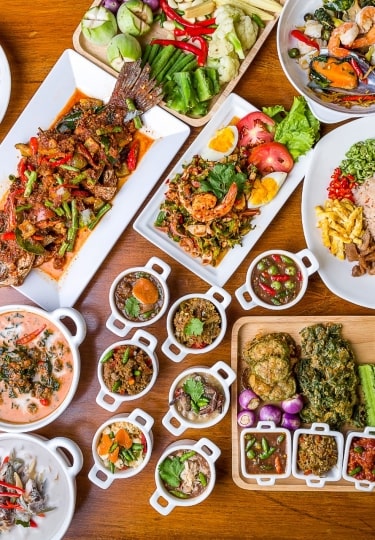Deciding what to eat in Thailand is always a pleasure, simply because the array of excellent options is nothing short of astonishing.
Part of what makes food in Thailand so celebrated is its impeccable balance of sweet, savory, salty, acidic, and spicy flavors.
The dominant palate here is loud: fresh bird’s eye chiles, tangy lime juice and tamarind, sweet unrefined palm sugar, umami-laden fish sauce and dried shrimp, plus generous helpings of intensely aromatic ingredients like lemongrass, galangal, garlic, makrut lime leaves, and cilantro.
Yet the way in which the most masterful Thai chefs combine these decidedly unsubtle ingredients is incredibly nuanced. Here are just a few of the dishes to try on your next trip to Thailand.
Pad Thai
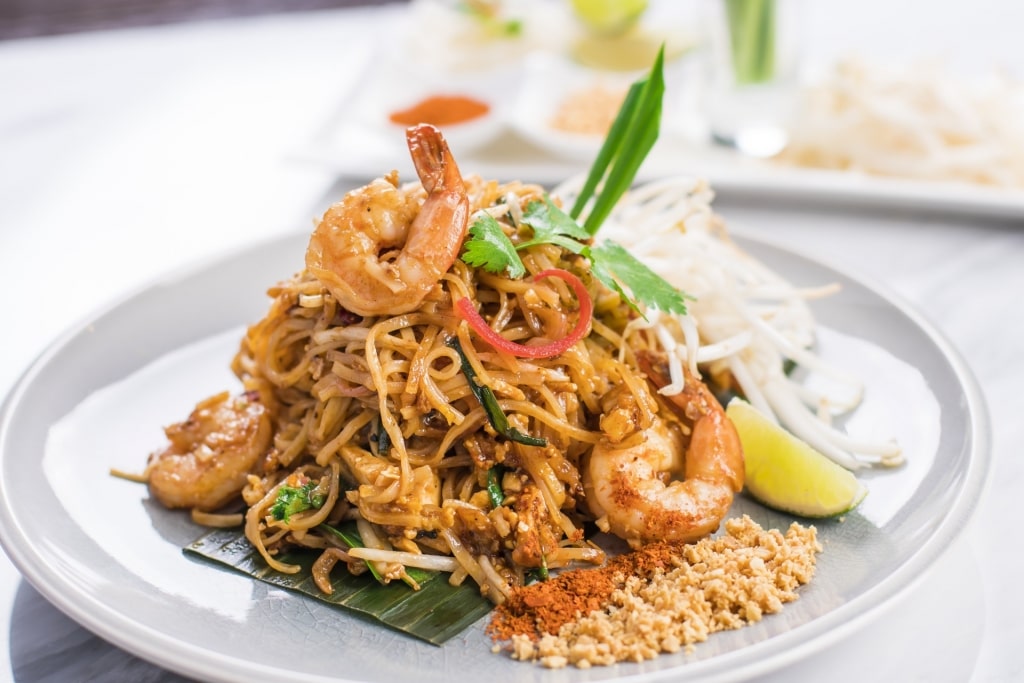
Pad thai
Thailand’s most famous culinary export has a rather unusual origin story. Shortly before the Second World War, Prime Minister Plaek Phibunsongkhram was on a mission to bolster national pride.
Chinese-style stir-fried noodles were already a popular dish, but he wanted the populace to have a dish that felt distinctly Thai.
The result was this tangle of rice noodles with prawns, beansprouts, tofu, dried shrimp, scrambled egg, scallions, and peanuts that embodies the salt, sweet, savory, and sour flavors for which the country’s cuisine is known.
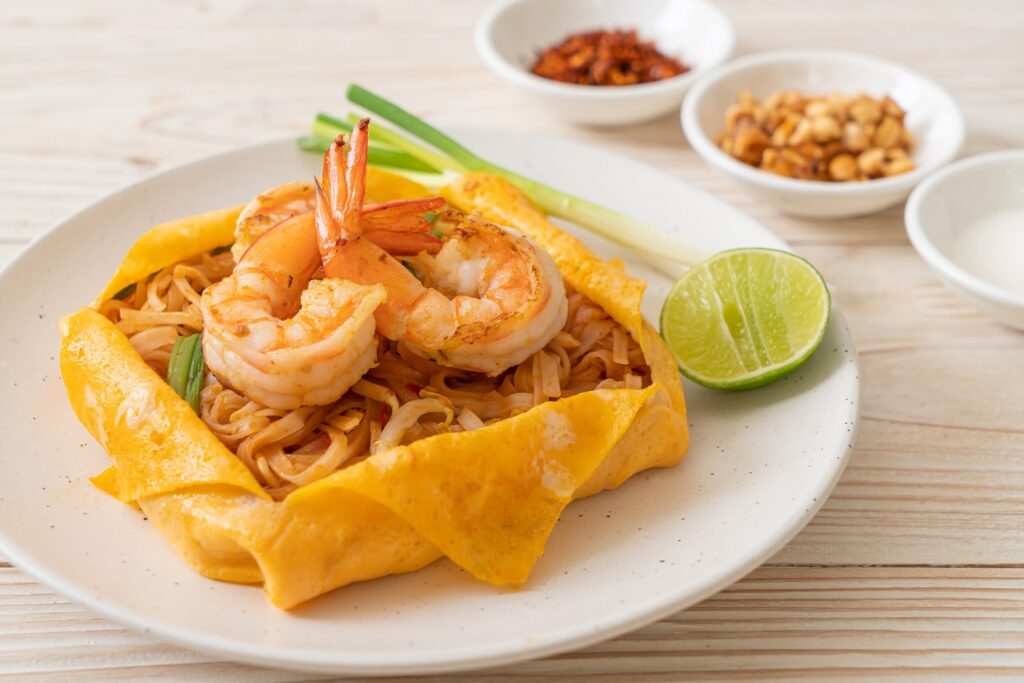
Pad thai
While pad Thai isn’t as ubiquitous in its home country as it is abroad, it’s still a beloved staple. In addition to the classic rendition, travelers can often find variations sporting different types of seafood, glass noodles, or wrapped in a whisper-thin omelet.
Read: Best Souvenirs to Buy in Thailand
Tom Yum Goong
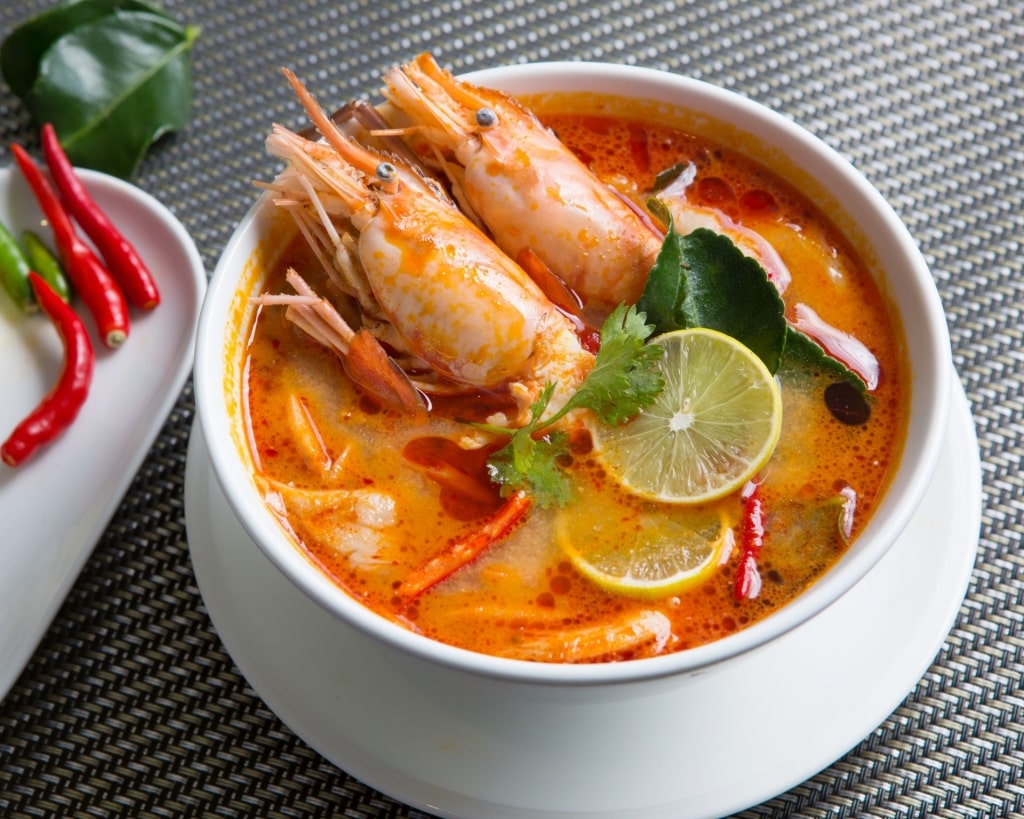
Tom yum goong
Most large Thai meals come with a soup, and sour, fiery tom yum goong is by far one of the most popular choices. Seasoned with lemongrass, galangal, plenty of chiles, makrut lime leaves, and a copious amount of fresh lime juice, the broth is addictive—even if it may make you break into a sweat.
As the name implies, goong (prawns) are a must, but many variations contain squid, cockles, or other proteins.
Pad Kee Mao
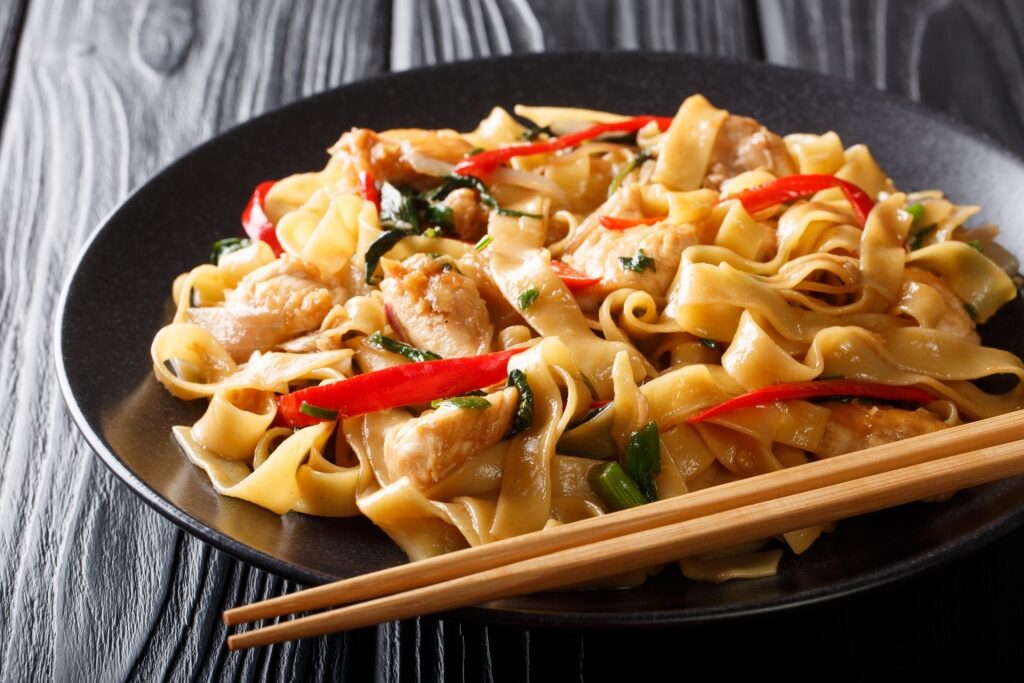
Pad kee mao
In case the name, which roughly translates to “drunken noodles” didn’t tip you off, this fiery dish is best consumed with a cold Singha beer. What sets pad kee mao apart are the fresh bird’s eye chiles and green peppercorns tossed into the wok alongside the flat rice noodles.
Generally, this dish can be ordered with chicken or pork, but the most common version is pad kee mao talay, which comes with squid, shrimp, and other seafood.
Pad Kra Pao
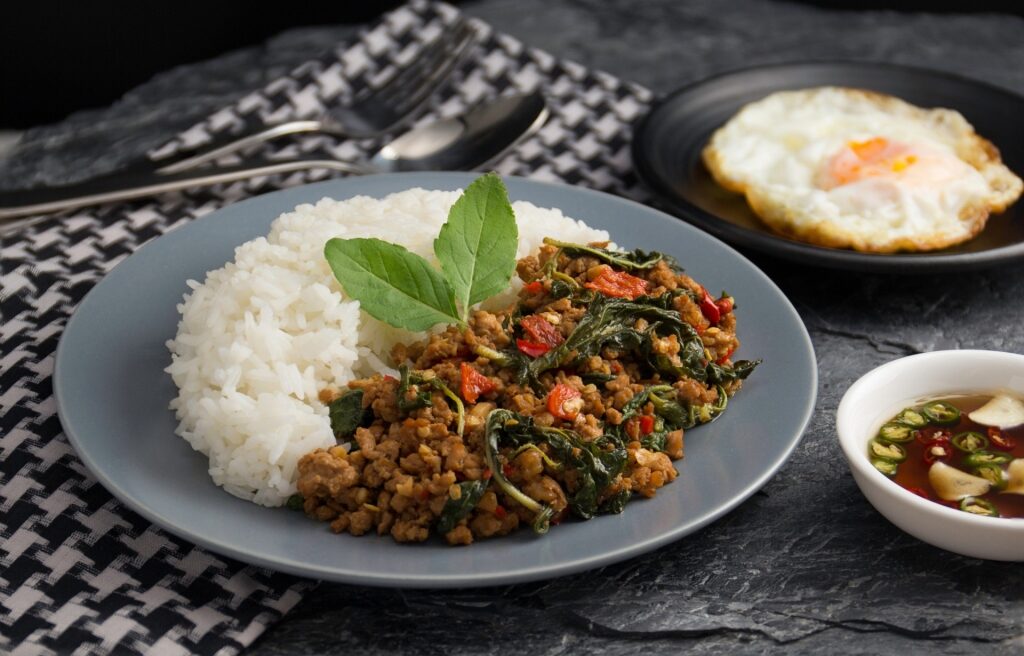
Pad kra pao
For many Thais, pad kra pao is the ultimate comfort food. Served morning through midnight by hawkers all over town, this blazing-hot stir-fry, seasoned with holy basil and bird’s eye chiles, comes together in a flash.
Just about any protein can be turned into pad kra pao, but the most common choices are minced moo (pork) and gai (chicken). The fried egg on top is optional, but highly recommended.
Tom Kha Gai
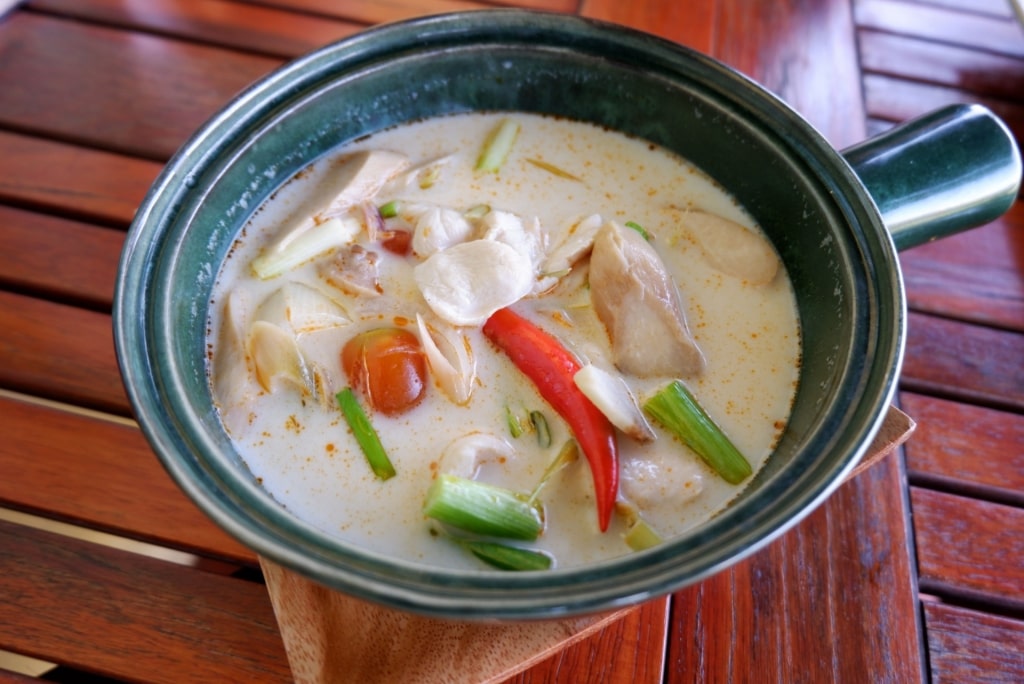
Tom kha gai
Made with an aromatic coconut broth steeped with galangal, makrut lime leaves, and lemongrass, tom kha gai is truly chicken soup for the soul.
Unlike tom yum goong, which often comes with a serious hit of heat, this comforting soup generally keeps the spice levels to a gentle zinginess. It’s the perfect palate-cleanser as part of a larger meal.
Khao Soi
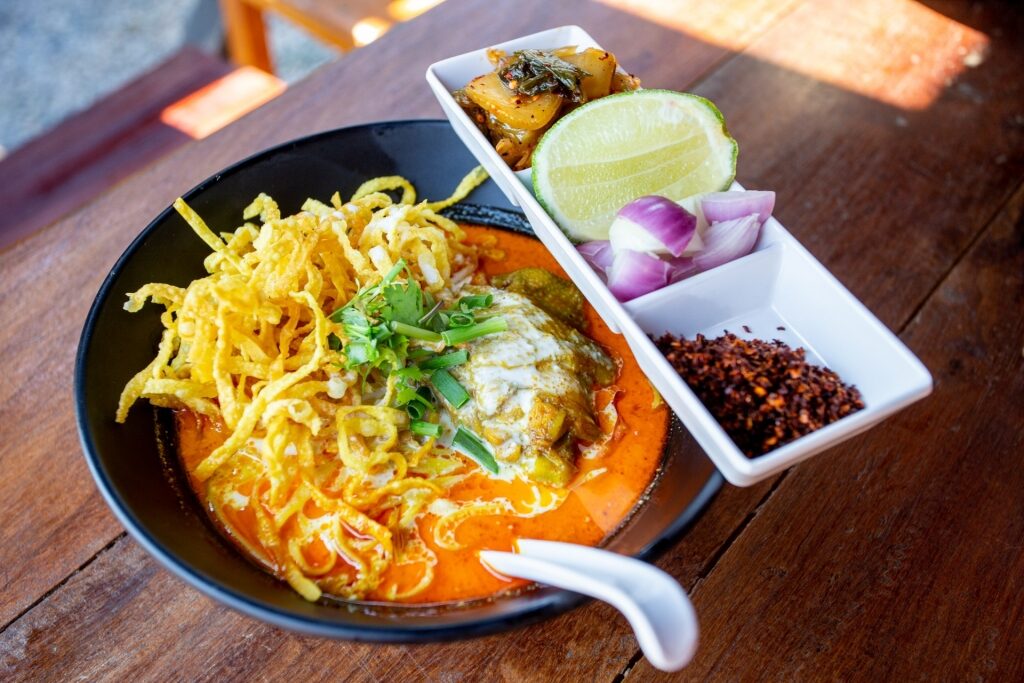
Khao soi
This northern Thai staple consists of egg noodles swimming in a luxurious coconut curry crowned with a nest of more crispy, flash-fried noodles. Since the region historically has a large Muslim population, the dish usually contains either braised chicken or beef in lieu of pork.
Fancier restaurants will occasionally add duck confit, shortribs, or other options. Pickled mustard greens and raw shallots add welcome pops of acidity and crunch, which help balance out the richness of the turmeric-tinted broth.
Although khao soi is most prevalent in Chiang Mai, Chiang Rai, and other cities around the region, it occasionally makes appearances at restaurants in Bangkok.
Kai Jeow
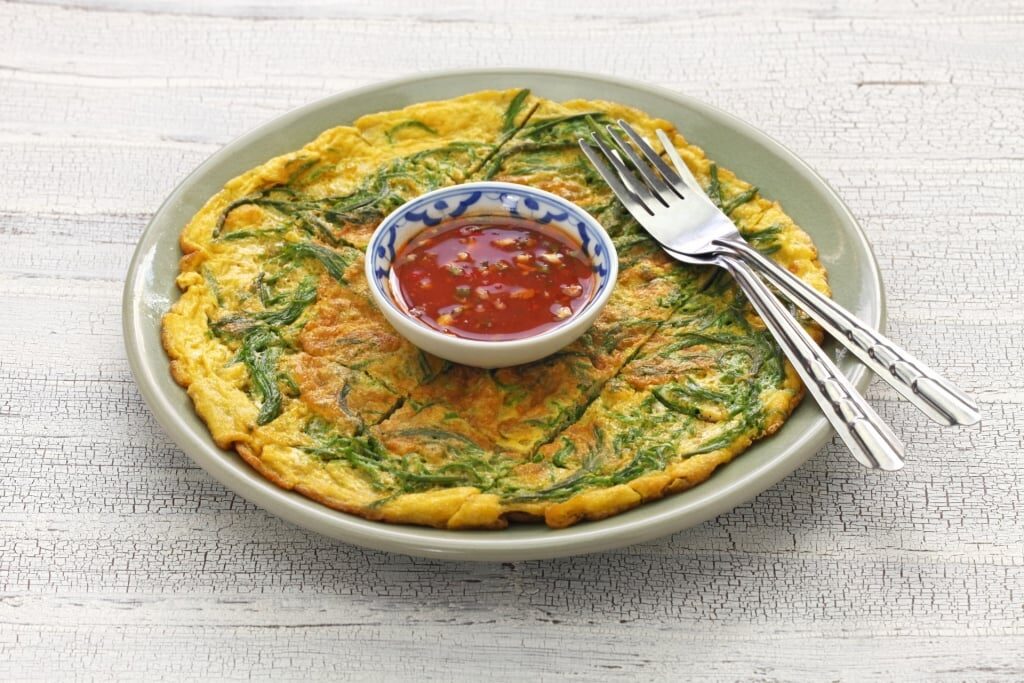
Kai jeow
Calling this dish an “omelet” can be rather misleading to visiting Westerners, as kai jeow is a far cry from a pale, wobbly French omelet or a cheesy American diner-style omelet. Thai-style omelets come together in the blink of an eye.
Simply point to which fillings you’d like—bird’s eye chiles are practically mandatory, ground pork is recommended—then watch as the cook beats them all together and pours the mixture into a shimmering layer of oil.
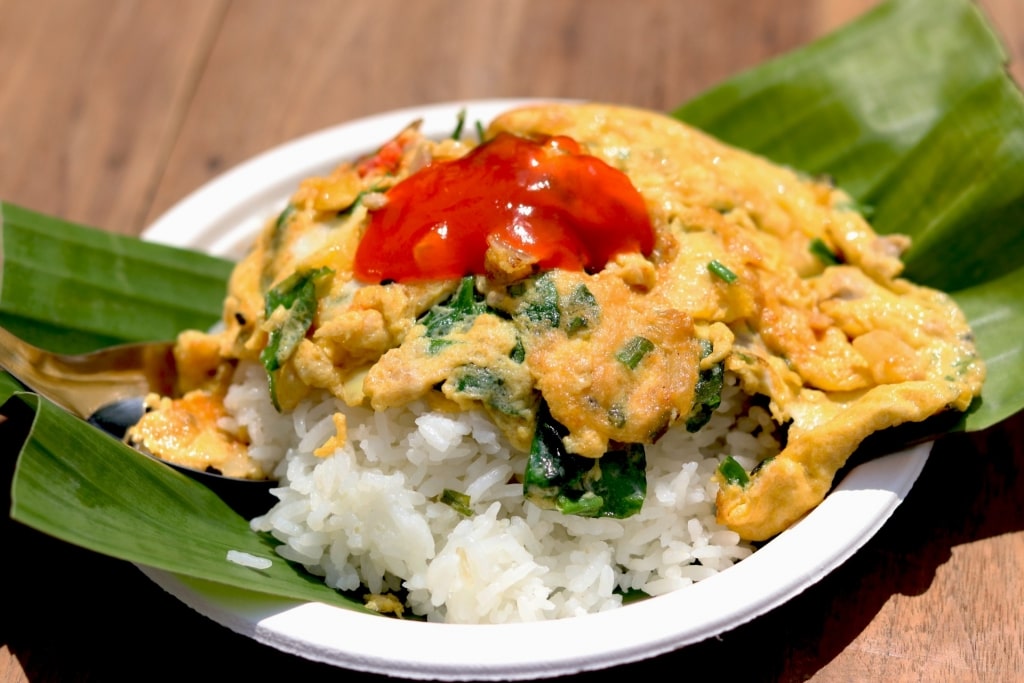
Kai jeow
The intense heat causes the eggs to puff up and then deflate, at which point it’s spooned on top of rice. Simple, affordable, and filling, it’s a common way to fuel up at lunchtime.
Read: What Is Thailand Known For?
Khao Niaow Ma Muang
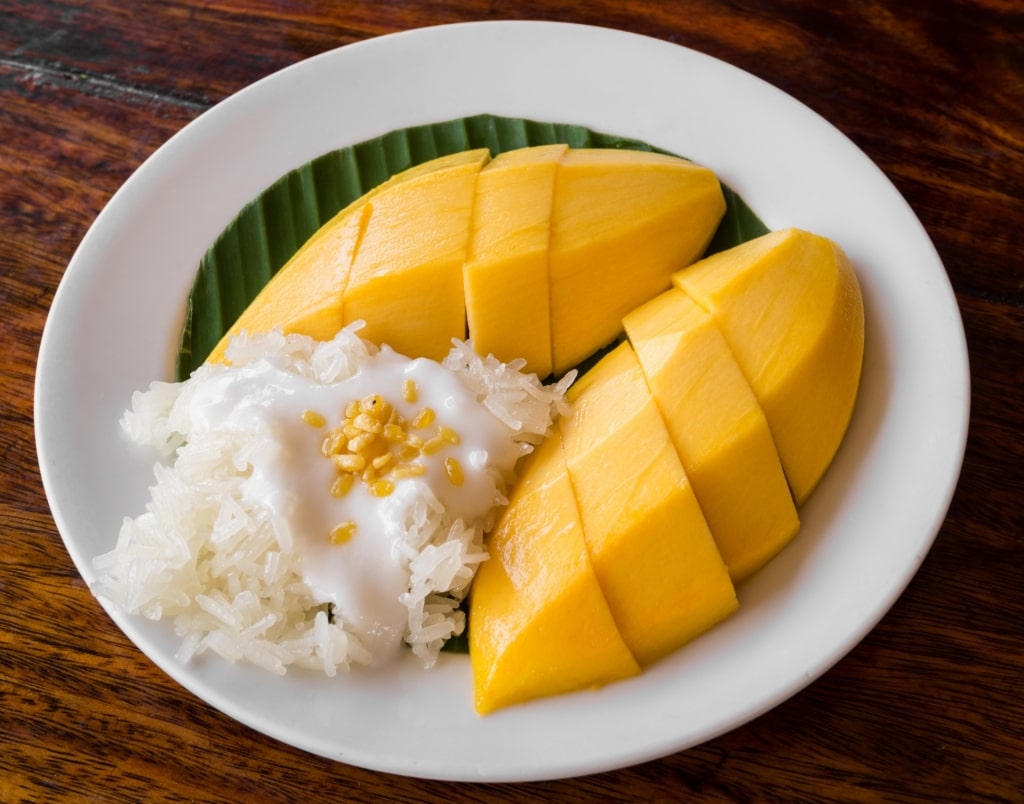
Khao niaow ma muang
Thais have a serious sweet tooth and no dessert is more famous than khao niao ma muang, or mango sticky rice. While it may initially appear simple, this dish hinges on top-quality ingredients that make it one of the best desserts in the world.
The mango should be just a tiny bit sour; the coconut-enriched sticky rice, often flavored with pandan, is best served ever-so-slightly warm topped with mung beans.
The coconut cream sauce should be rich, slightly salty, and sweetened with fragrant palm sugar. When properly executed, the results are almost impossible to stop eating.
Gai Ped Med Mamuang
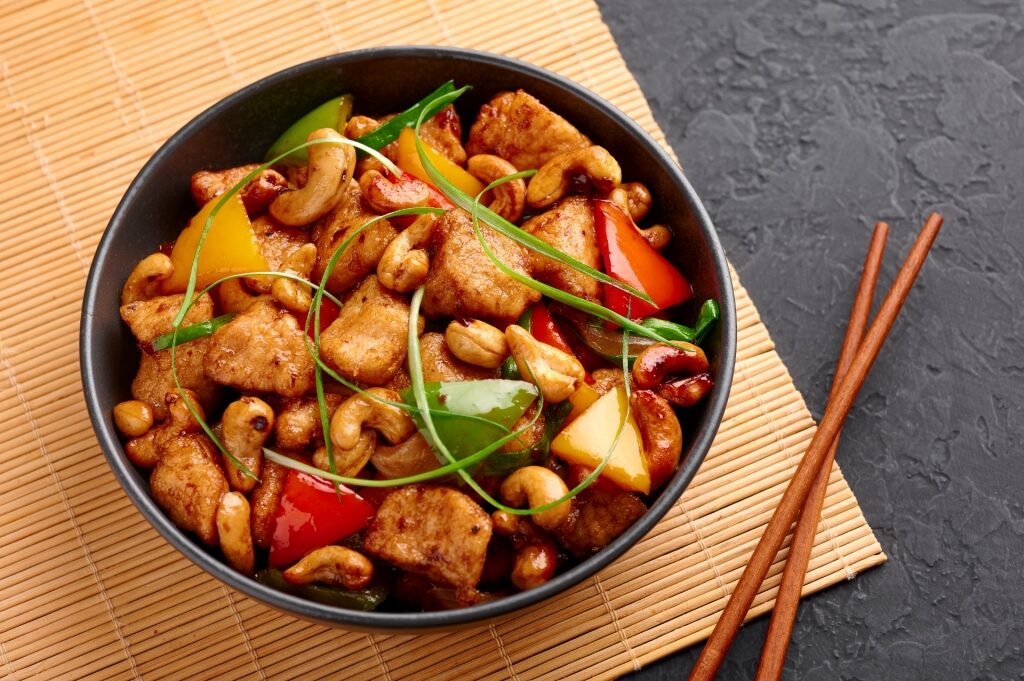
Gai ped med mamuang
Consisting of a glossy plate of stir-fried boneless chicken with cashews, gai ped med mamuang is unfussy cooking at its finest.
Although there’s usually a chile or two in the mix, this stir-fry isn’t usually terribly spicy and can be found throughout the country.
Gaeng Keow Wan
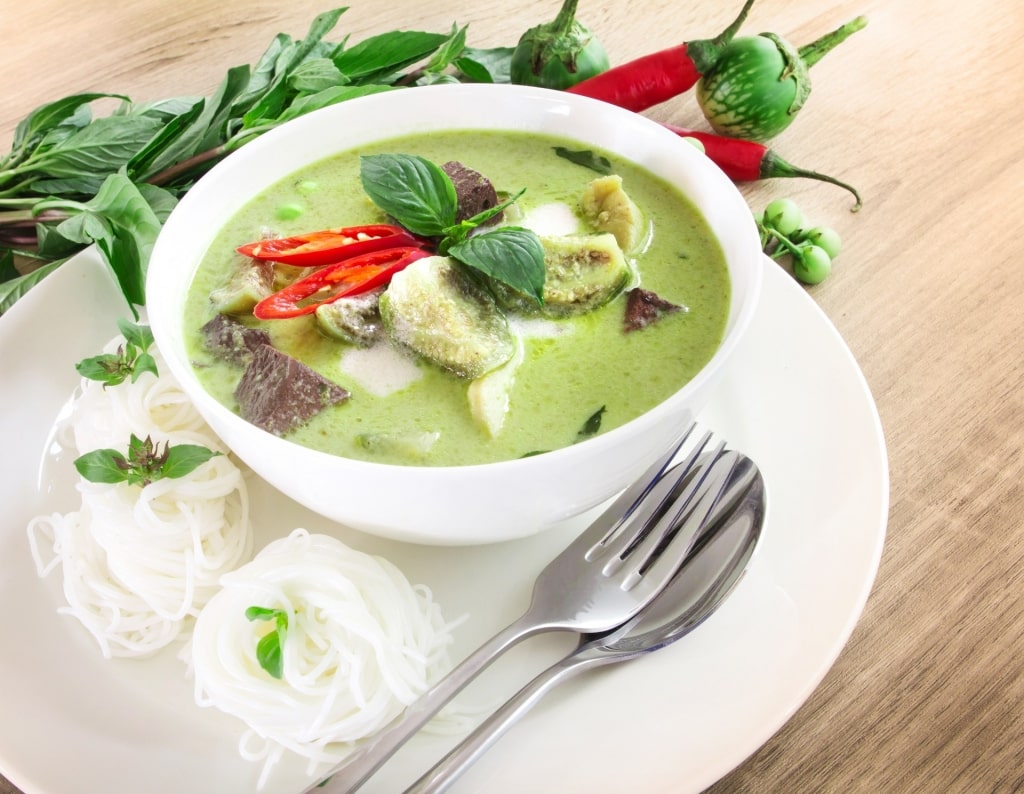
Gaeng keow wan
When it comes to food in Thailand, one dish that’s omnipresent throughout the land is gaeng keow wan, or green curry. All sorts of recipes exist, but the dish generally consists of pea-sized eggplants, bamboo shoots, and other vegetables bobbing in a creamy, coconut-rich curry.
Braised, bone-in chicken is the most common protein, which often comes accompanied by custardy cubes of set pig’s blood.
The latter adds a deeply savory element to the stew. Diners unfamiliar with blood as an ingredient don’t need to feel squeamish—the fully cooked blood all but vanishes, leaving behind a hard-to-place hit of umami.
Kuay Tiew Rua
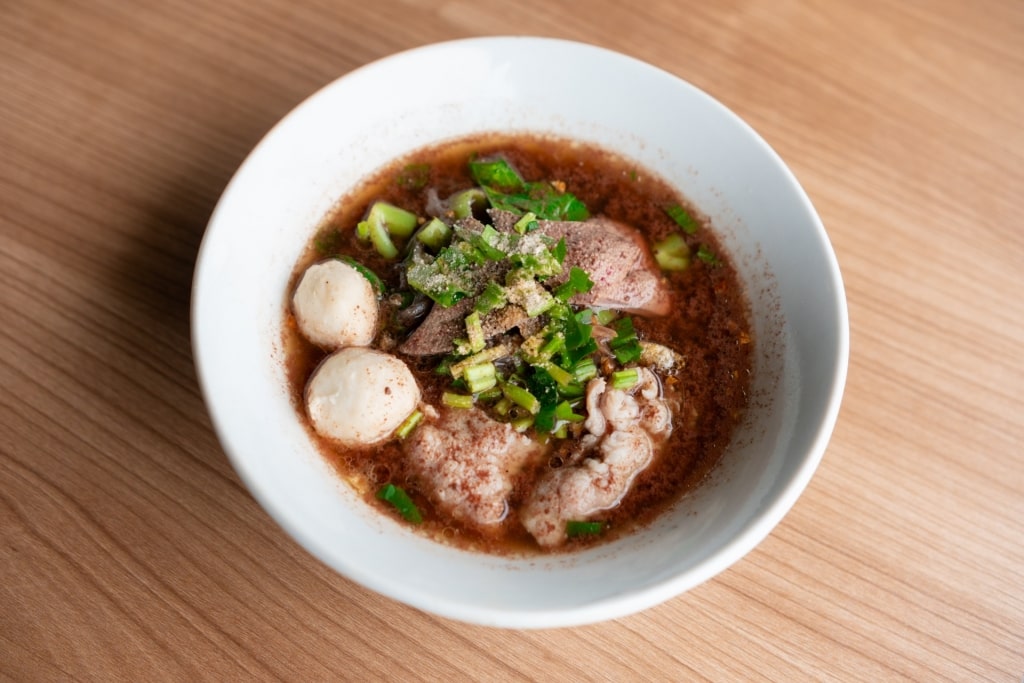
Kuay tiew rua
When the ancient city of Ayutthaya was the capital of the Kingdom of Siam, hawkers used to ply the waterways and floating markets selling guay tiew rua, or “boat noodles.” These days, they’re popular just about everywhere from the early morning to late at night.
Each bowl consists of rice noodles—you can order sen yai, thick noodles, or sen lek, thin ones—along with pork, offal, pork balls, and a healthy garnish of basil and bean sprouts. What really sets these noodles apart is the intensely flavorful broth, heady with cinnamon and star anise.
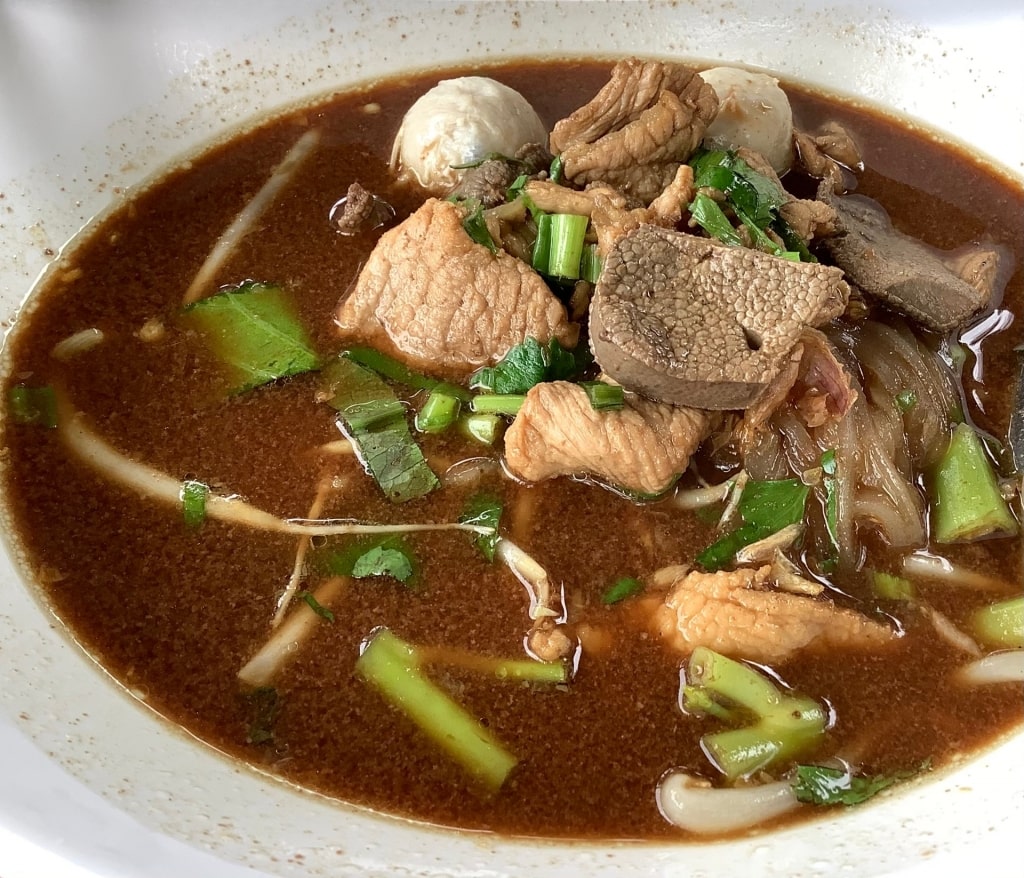
Kuay tiew rua
Right before serving, a spoonful of pig’s blood is added, which gives the soup incredible body and depth.
Gai Yang
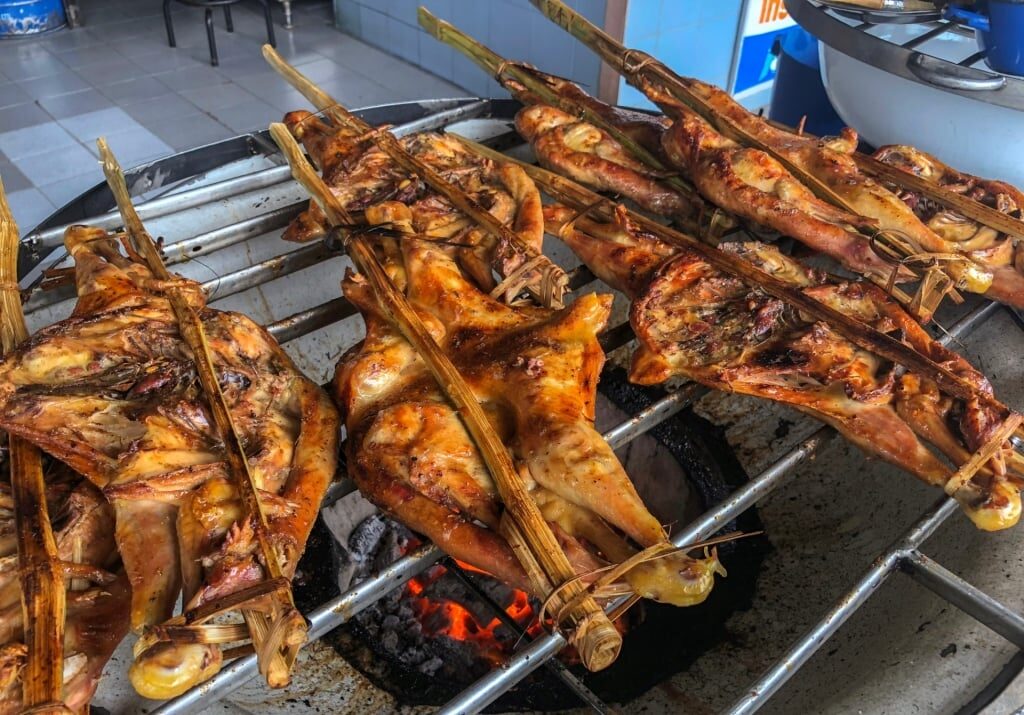
Gai yang
Thai grillmasters have a knack for infusing an incredible amount of flavor into meat. Gai yang, or grilled chicken, derives its juicy texture from an overnight brine with fish sauce, sugar, and a slew of additional seasonings that vary according to individual recipes.
After a sear over white-hot charcoal, the skin gets absurdly crispy while the meat stays moist.
Gai yang is one dish found all over Thailand and it’s deeply satisfying to eat. Although it’s perfectly good on its own, it’s even better when dipped in a chile-spiked sauce.
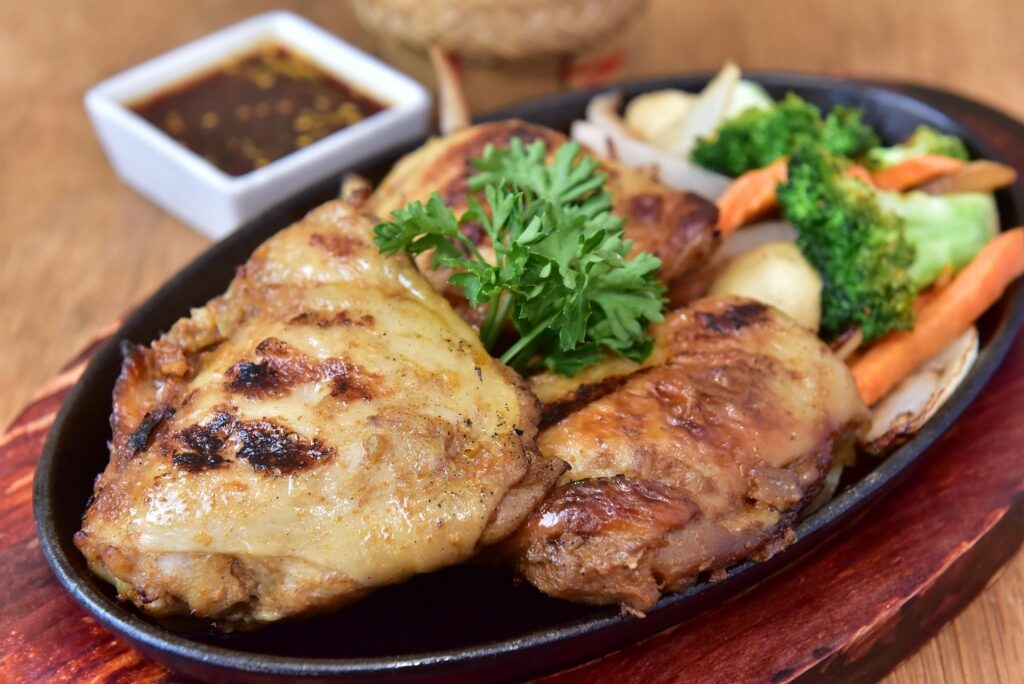
Gai yang
The typical accompaniments are sticky rice, which should be eaten in small pinches using your fingers, and som tam (papaya salad). Typically, most cooks offer a small array of fresh herbs or vegetables as garnish for snacking.
Hoi Tod
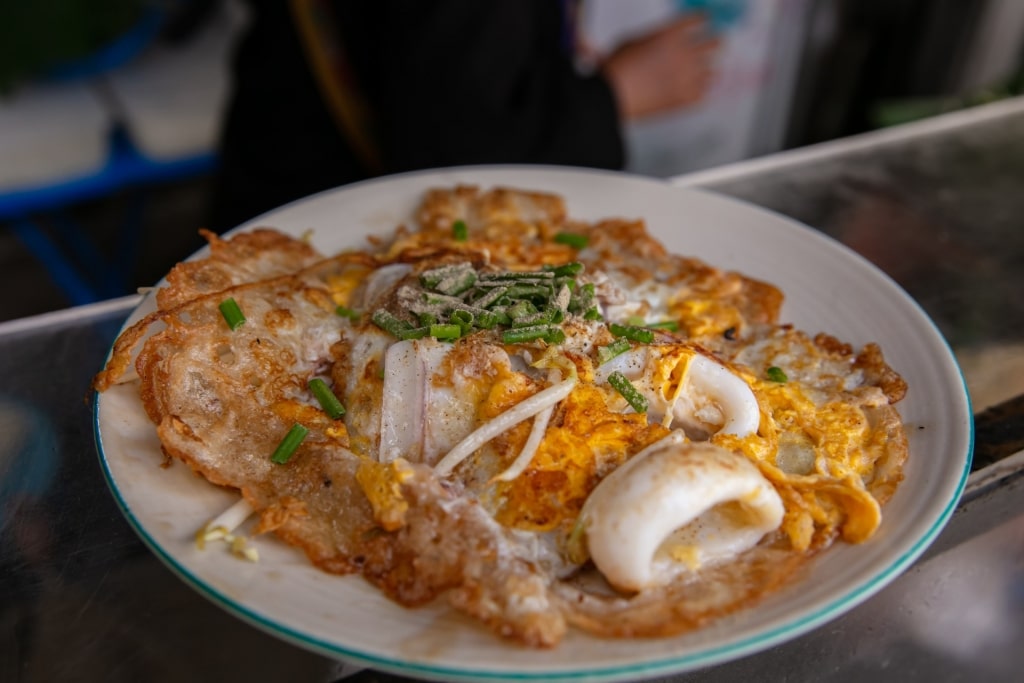
Hoi tod
If you visit a street food vendor serving pad Thai, the chances are high that they’ll use the same griddle to prepare hoi tod (oyster omelet). While the latter may be less famous among visiting foreigners than Thailand’s beloved noodle dish, it’s every bit as tasty and worth seeking out.
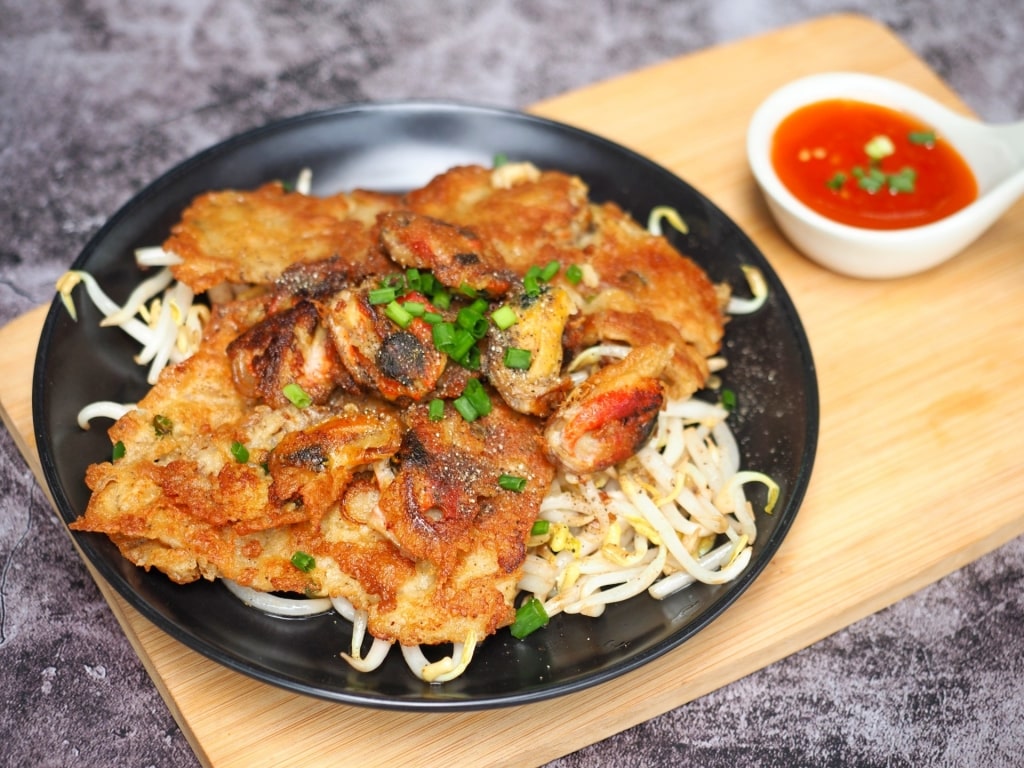
Hoi tod
Hoi tod consists of freshly shucked oysters—mussels or other seafood are also popular additions—bound in an egg-and-rice flour pancake. All of this gets a quick sear in a generous slick of oil, before being plated with beansprouts and served with plenty of hot sauce.
Crispy, salty, and ever-so-slightly greasy in the best way, this is the ultimate late-night snack, although it’s good at any time of day.
Read: Best Street Food in Bangkok
Gai Tod Hat Yai
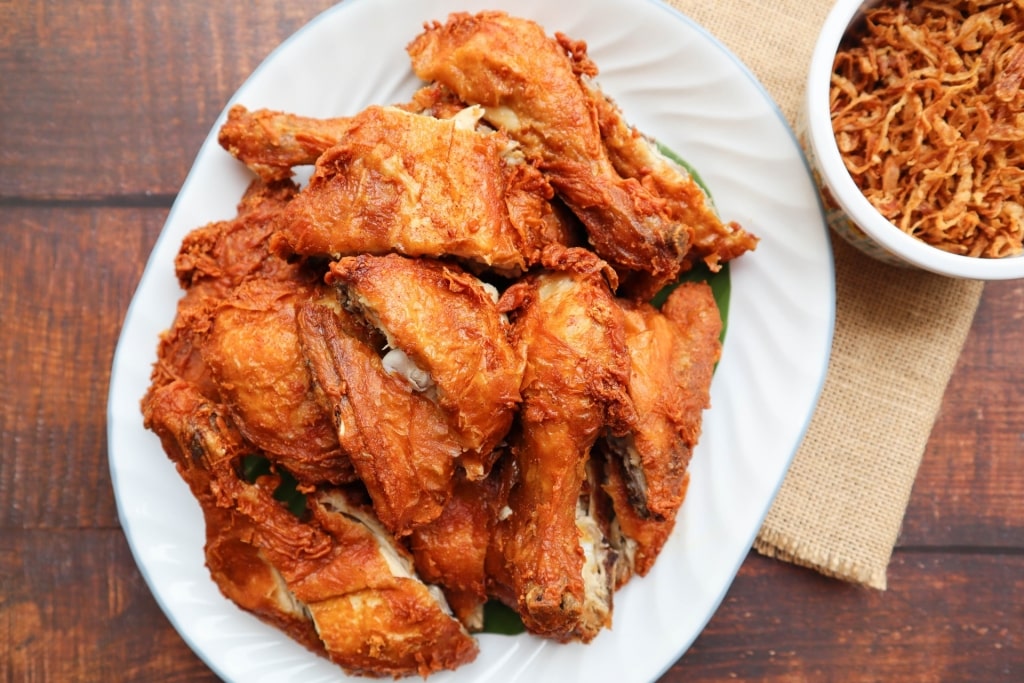
Gai tod Hat Yai
From South Korea to Japan to the United States, many cultures have their own distinctive spin on fried chicken. Thailand’s gai tod Hat Yai, or “Hat Yai-style fried chicken” ranks right up there with the finest global examples of the genre.
Thanks to a fish sauce-heavy brine heady with garlic, both white and dark meat stay impossibly moist and flavorful, while the exterior develops a shatteringly crispy crust.
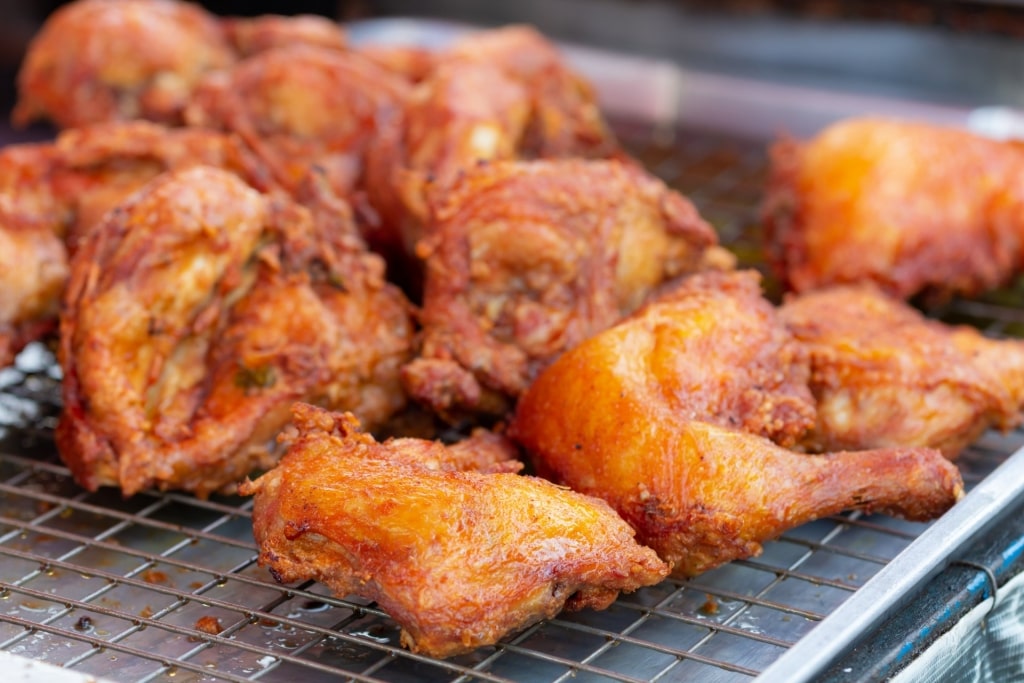
Gai tod hat yai
“Hat Yai” refers to a city in Southern Thailand, but this delicacy is enjoyed throughout the land. It’s especially popular as hawker fare, which is served from the wee hours before dawn until very late at night.
As with grilled chicken, the preferred accompaniments are sticky rice and som tam (papaya salad), but the chicken is also absolutely perfect on its own.
Som Tam
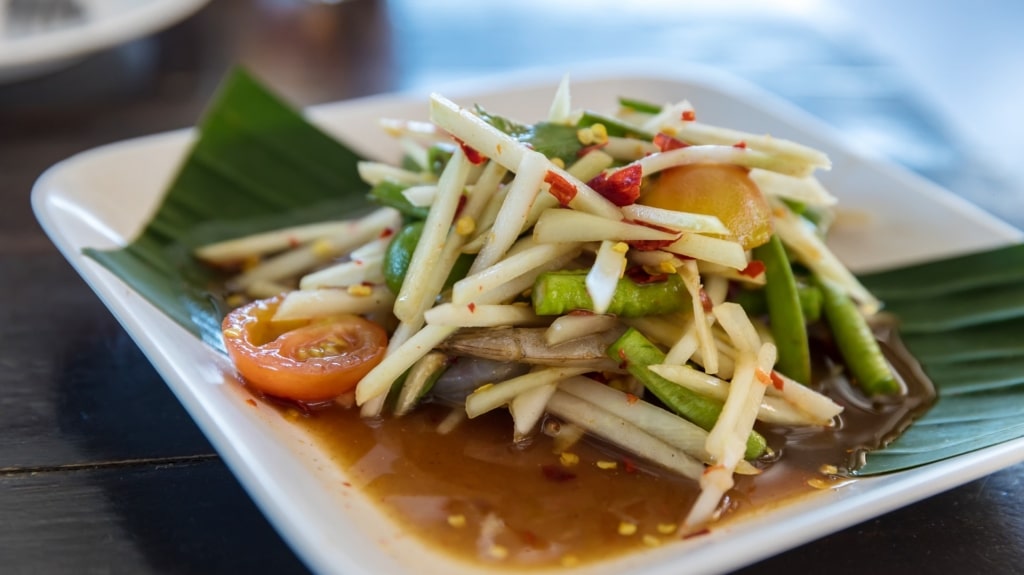
Som tam
Som tam actually refers to a wide range of cold salads served throughout the country. The best-known version by far is som tam Thai, which consists of shredded green papaya, chopped long beans, and cherry tomatoes.
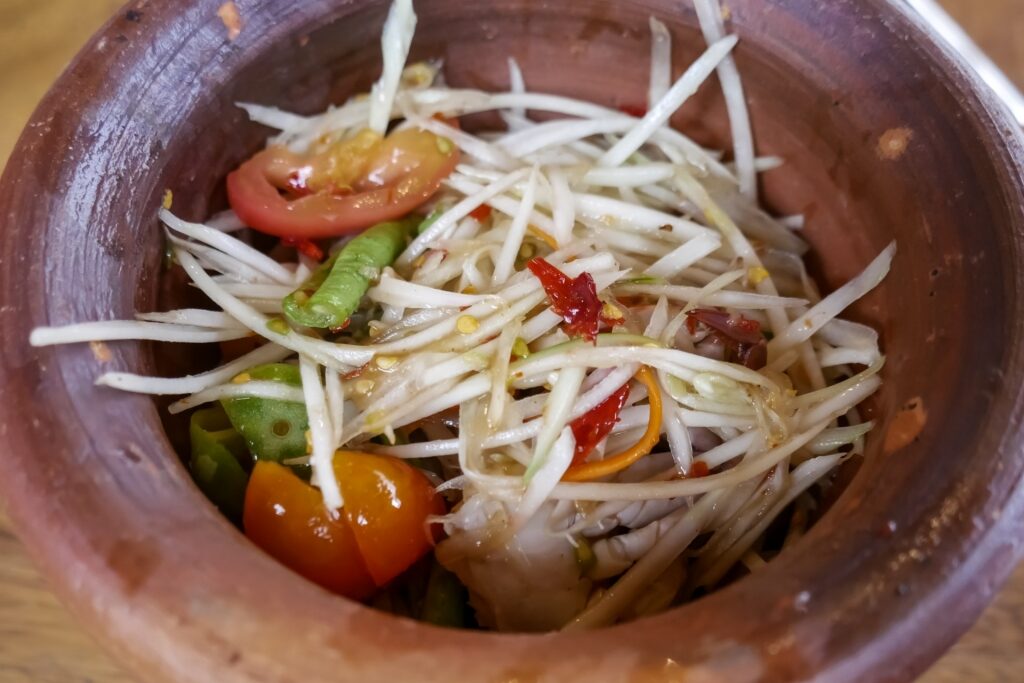
Som tam
All of this is tossed into a giant mortar, called a pok-pok, where it’s tossed with a fiercely flavorful dressing of fish sauce, lime juice, garlic, bird’s eye chiles, and palm sugar. Tiny dried shrimp and roasted peanuts add crunch and additional flavor.
From this jumping-off point, cooks can go in all sorts of different directions. Som tam can be made with other vegetables—shredded carrots, cucumbers, or even corn kernels are common—or fruits such as apples or green mango.
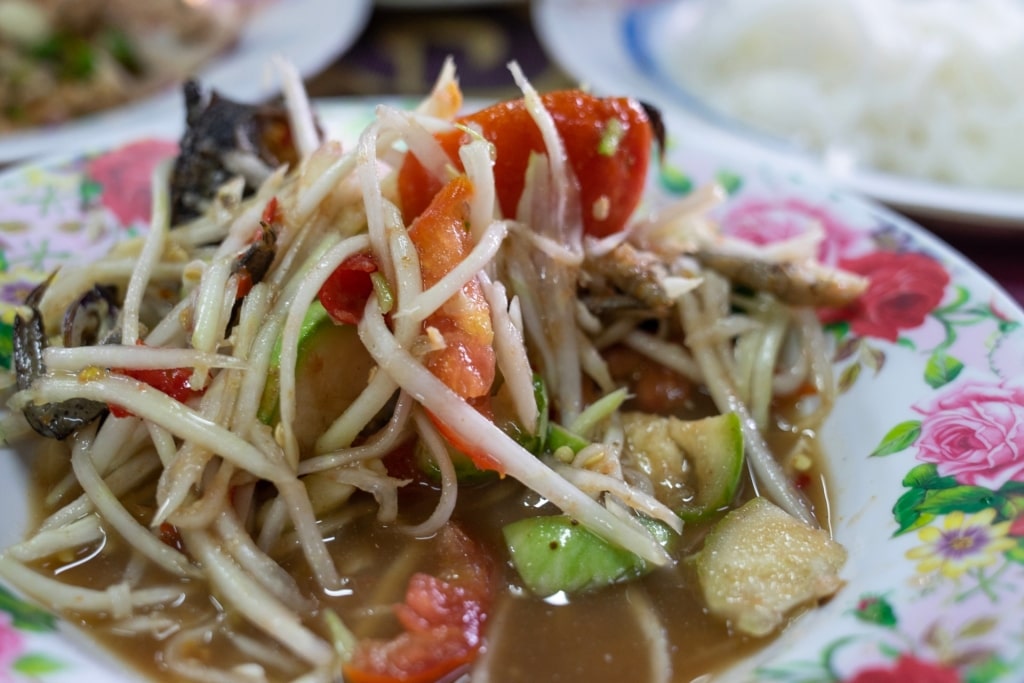
Som tam puu
Som tam puu contains tiny, pickled river crabs. Northern Thai versions tend to contain fermented fish sauce, a deeply flavorful condiment that can be something of an acquired taste, but quickly becomes addictive.
Note that while som tam may be served cold, it often packs a deceptive amount of heat courtesy of the fresh chiles.
While a modestly spicy rendition might contain a single bird’s eye, real chile fiends can polish off 10 or more in a single plate. Order yours “ped” (spicy), “mai ped” (not spicy), or “ped nit noi” (a little spicy).
Larb
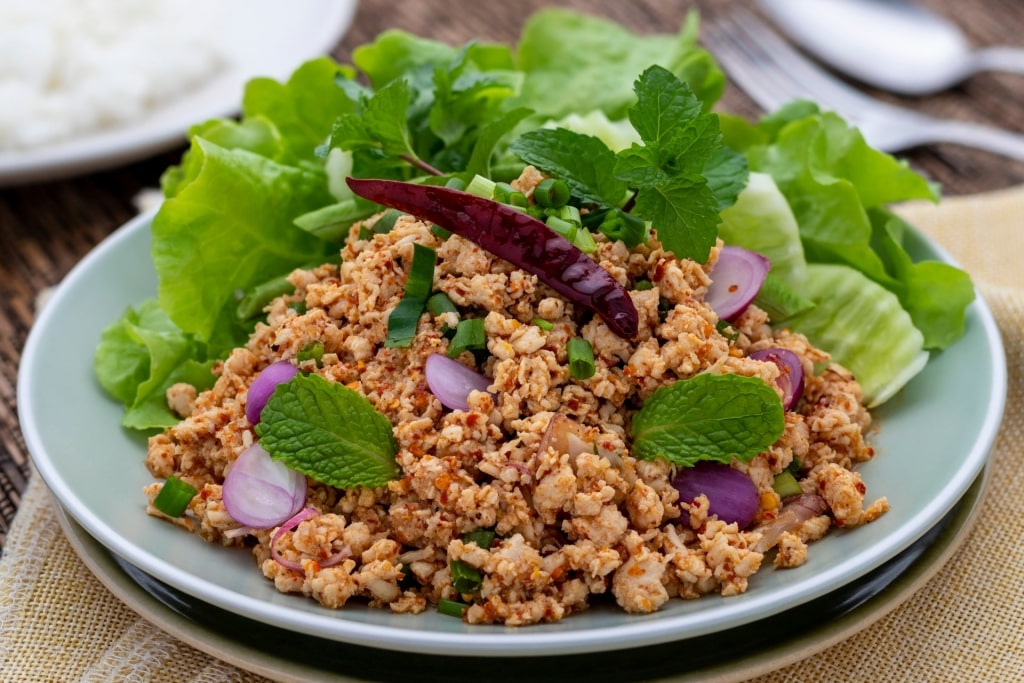
Larb
Although you can find this salad of cold, minced meat throughout Thailand, it varies enormously by region and cuisine. The most common version is larb moo, made with pork, although you’ll find variations with chicken, beef, and even duck or occasionally lamb.
Northern Thai versions tend to lean more heavily on offal, while the variety served in most of Bangkok’s restaurants tends to have a less funk-forward flavor profile.
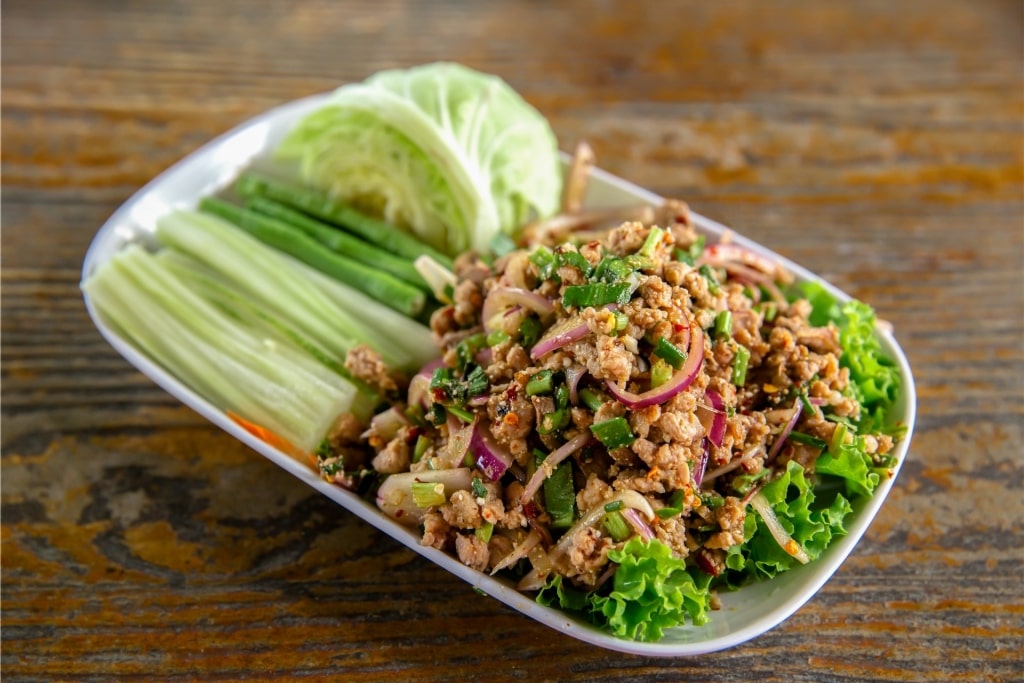
Larb
Regardless of which larb you order, the predominant seasonings tend to be roasted rice powder, which lends a toasty undertone and a slightly crunchy texture, along with plenty of lime, fresh mint, and chopped shallots or onions.
Larb makes for a great lunch on its own, particularly when accompanied by sticky rice, but it’s often served with a larger spread of cold salads and grilled meats.
Read: When Is the Best Time to Visit Thailand?

Bangkok, Thailand
One of the best ways to discover the magic of the Land of Smiles is on a cruise, which can whisk you from popular islands like Phuket and Koh Samui to the vibrant streets of Bangkok. Browse Celebrity’s cruises to Thailand and book your next delicious adventure today.
